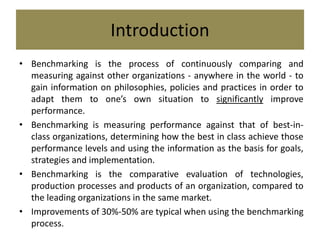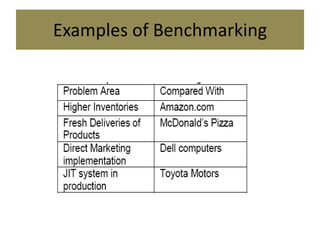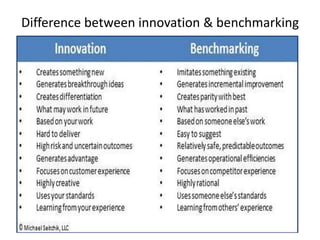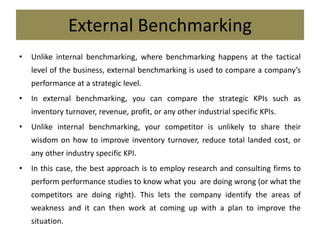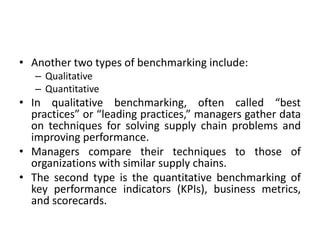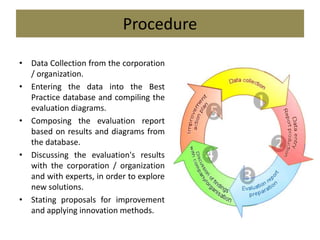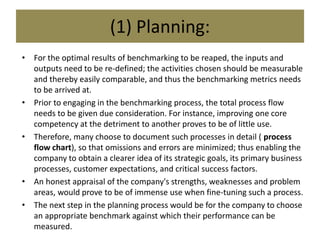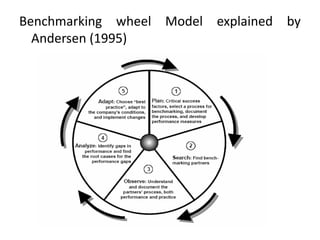The document discusses benchmarking, which involves comparing performance metrics to other organizations in order to identify areas for improvement. It outlines the history and definition of benchmarking, as well as different types (e.g. internal vs. external). A typical benchmarking process involves planning, data collection, analysis, implementation, and monitoring. Various tools are used in benchmarking, including balanced scorecards, gap analysis, and data envelopment analysis. While benchmarking provides a way to improve performance, it also faces challenges in securing sponsorship, defining scope and metrics, establishing standards, and deriving meaningful results.

